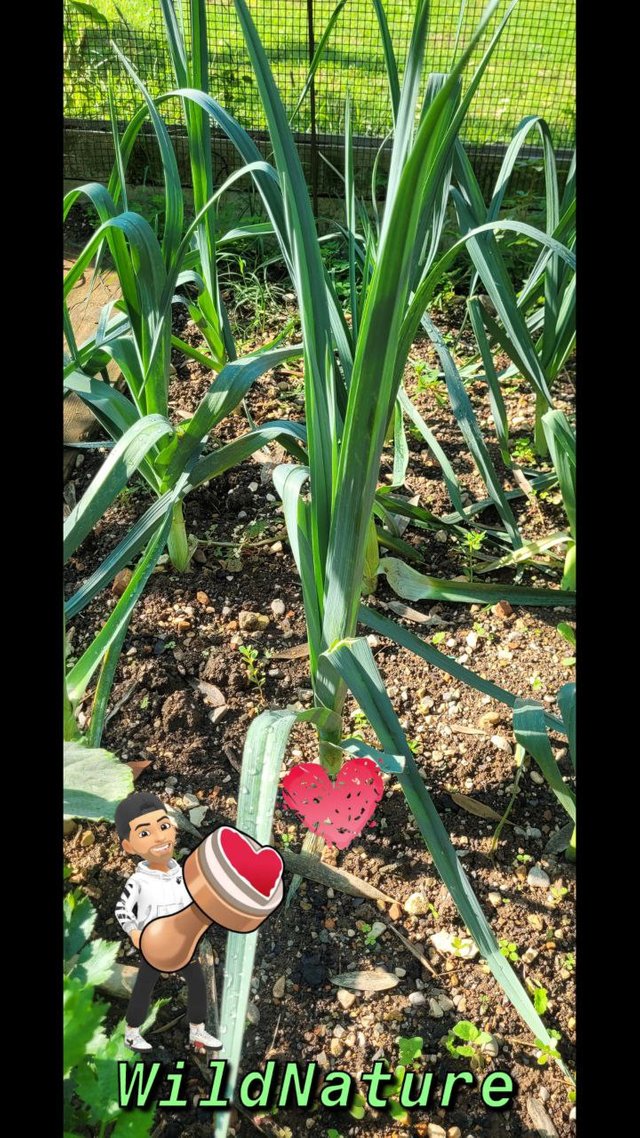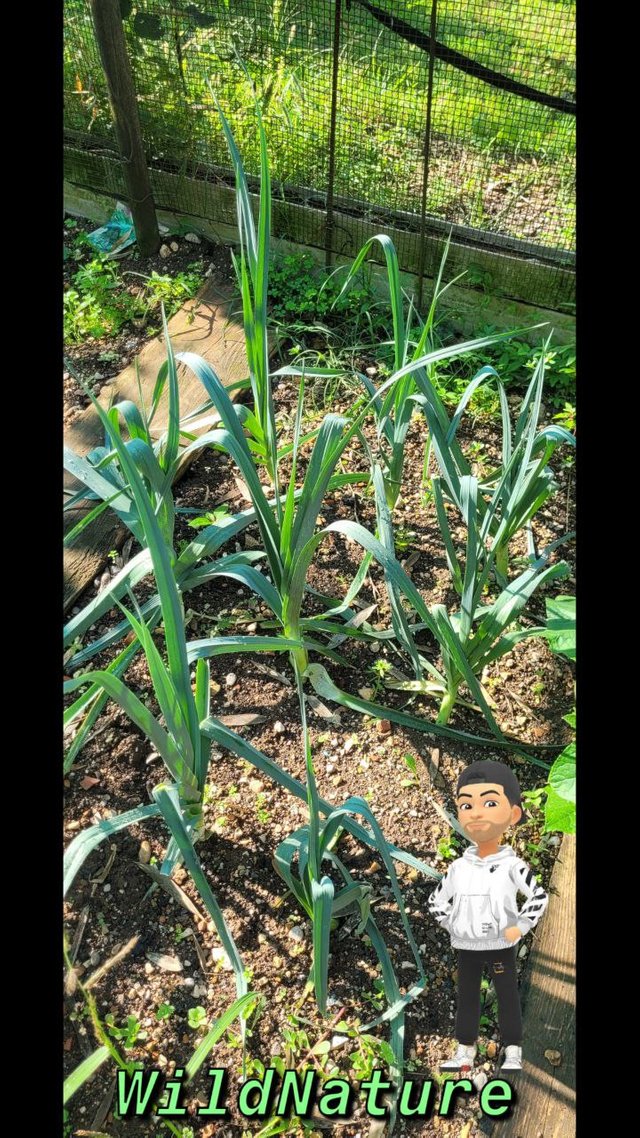The English version follows in the end.
Versione Italiana 🇮🇹🇮🇹🇮🇹

Il porro, scientificamente conosciuto come Allium ampeloprasum, è una pianta erbacea biennale appartenente alla famiglia delle Amaryllidaceae, la stessa di cipolla, aglio ed erba cipollina. Originario del bacino del Mediterraneo, è oggi coltivato in tutto il mondo per il suo utilizzo culinario, grazie al sapore delicato e aromatico che ricorda una via di mezzo tra l'aglio e la cipolla. Le parti commestibili della pianta sono il fusto bianco e la base delle foglie verdi, utilizzati in molte ricette.
Il porro ha un portamento eretto, con un lungo fusto cilindrico bianco. Le foglie sono piatte, lineari e di colore verde-bluastro, con la parte inferiore che avvolge il fusto formando la porzione bianca commestibile. Se lasciato fiorire, il porro produce un'infiorescenza globosa composta da piccoli fiori biancastri o violacei che attraggono gli insetti impollinatori.
Dal punto di vista della coltivazione, il porro è una pianta rustica che cresce bene in diversi tipi di terreno, preferibilmente ben drenati e ricchi di sostanza organica. È una coltura che predilige climi temperati e umidi. La semina avviene in primavera, mentre la raccolta può estendersi dall'estate fino all'inverno, a seconda della varietà e del clima. Durante la crescita, è consigliabile rincalzare il terreno intorno ai fusti per favorire l'imbiancamento della parte inferiore, rendendola più tenera e saporita. Le irrigazioni devono essere regolari, soprattutto durante i periodi caldi e secchi.

Il porro è un alimento a basso contenuto calorico, ricco di acqua e fibre, che favoriscono la digestione. Contiene vitamine, in particolare vitamina A, vitamina C e alcune del gruppo B, oltre a minerali come potassio, ferro e magnesio. Ha proprietà diuretiche e depurative, ed è spesso consigliato nelle diete detox per le sue qualità disintossicanti.
In cucina, il porro è un ingrediente versatile che può essere utilizzato sia crudo che cotto. È ottimo per insaporire zuppe, minestre, risotti e salse. Viene spesso impiegato come base per soffritti, in sostituzione della cipolla, per conferire un aroma più delicato ai piatti. Le foglie verdi, solitamente scartate, possono essere utilizzate per insaporire brodi e stufati.
E voi, avete mai coltivato il porro nel vostro orto o lo utilizzate spesso in cucina? Quali sono le vostre ricette preferite con questo ortaggio? Lasciate un commento e un "like" se apprezzate il porro! 👍🥬🌱💚
(Foto scattate da me) 📸
English version 🇬🇧🇬🇧🇬🇧

The leek, scientifically known as Allium ampeloprasum, is a biennial herbaceous plant belonging to the Amaryllidaceae family, the same as onion, garlic, and chives. Native to the Mediterranean basin, it is now cultivated worldwide for its culinary use, thanks to its delicate and aromatic flavor that is somewhat between garlic and onion. The edible parts of the plant are the white stalk and the base of the green leaves, used in many recipes.
The leek has an upright growth habit, with a long white cylindrical stem. The leaves are flat, linear, and bluish-green, with the lower part wrapping around the stem to form the edible white portion. If allowed to flower, the leek produces a globular inflorescence made up of small whitish or purplish flowers that attract pollinating insects.
In terms of cultivation, the leek is a hardy plant that grows well in various types of soil, preferably well-drained and rich in organic matter. It is a crop that thrives in temperate and humid climates. Sowing takes place in the spring, while harvesting can extend from summer to winter, depending on the variety and climate. During growth, it is advisable to mound the soil around the stalks to promote the blanching of the lower portion, making it more tender and flavorful. Regular watering is necessary, especially during hot and dry periods.

Leeks are a low-calorie food, rich in water and fiber, which aid digestion. They contain vitamins, particularly vitamin A, vitamin C, and some B vitamins, as well as minerals such as potassium, iron, and magnesium. They have diuretic and detoxifying properties and are often recommended in detox diets for their cleansing qualities.
In the kitchen, leeks are a versatile ingredient that can be used both raw and cooked. They are excellent for flavoring soups, stews, risottos, and sauces. Often used as a base for sautés, in place of onions, they provide a milder aroma to dishes. The green leaves, usually discarded, can be used to enhance the flavor of broths and stews.
And what about you? Have you ever grown leeks in your garden or used them frequently in cooking? What are your favorite recipes with this vegetable? Leave a comment and a "like" if you appreciate leeks! 👍🥬🌱💚
(Photos taken by me) 📸